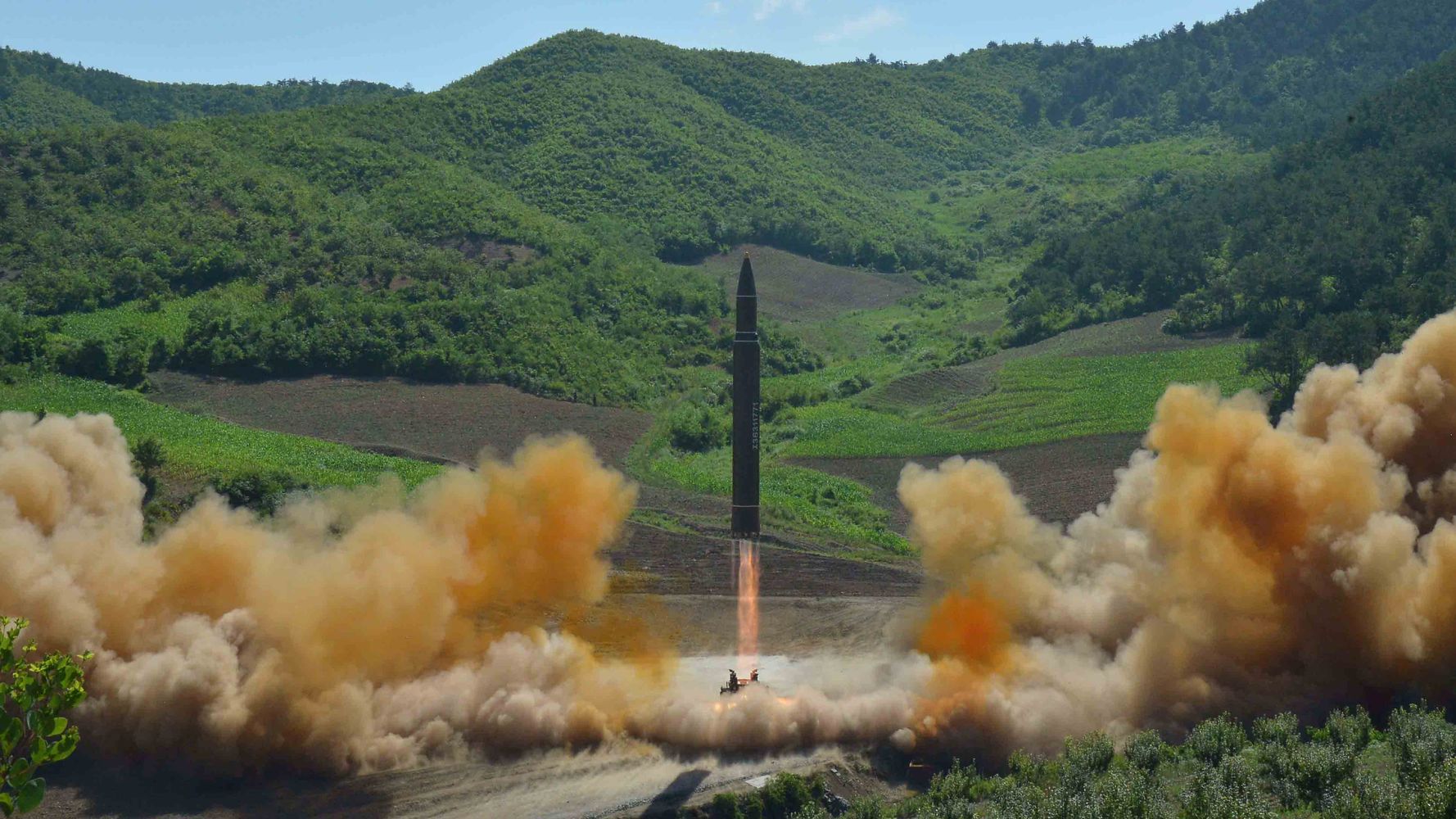
Siegfried Hecker is a nuclear scientist who was the director of the Los Alamos National Laboratory from 1986 to 1997.
STANFORD, Calif. — Last week, President Donald Trump threatened to rain “fire and fury” upon North Korea if it continues to threaten the United States. North Korea’s leader, Kim Jong Un, responded by threatening to launch four missiles at waters around Guam. Fortunately, U.S. Secretary of Defense James Mattis and U.S. Secretary of State Rex Tillerson toned down the rhetoric this week by stating that the U.S. seeks peaceful denuclearization, and Kim announced that he would wait a bit to launch missiles toward Guam. Although the fundamental disagreements have not been resolved, these actions may buy time to defuse the crisis.
I have visited North Korea seven times and its nuclear facilities four times, and although I’m convinced that North Korea’s nuclear personnel are very capable, I believe they are still a few nuclear and missile tests away from achieving the capability to reach the U.S. mainland with a nuclear-tipped intercontinental ballistic missile. They likely do, however, have the ability to deliver nuclear-tipped shorter-range missiles to all of South Korea and Japan. Kim clearly wants to be able to threaten the U.S. mainland as his ultimate deterrent to U.S. aggression, but he is unlikely to carry out such an attack because it would be a suicide mission.
Kim is a tyrant, but I don’t believe he is crazy or suicidal. I believe he is deterrable. Nevertheless, it is possible that in his drive to acquire an intercontinental ballistic missile and thereby realize a greater balance with the U.S., Kim could miscalculate where the red line actually is and trigger a response from Washington that could lead to war. The recent war of words between the leaders brings us too close to that precipice.
To chart the best way forward, it helps to look back at how U.S. presidents handled North Korea’s nuclear challenges and the threats they posed over the past 30 years and three generations of Kim family leaders. We must learn from lessons of the past.
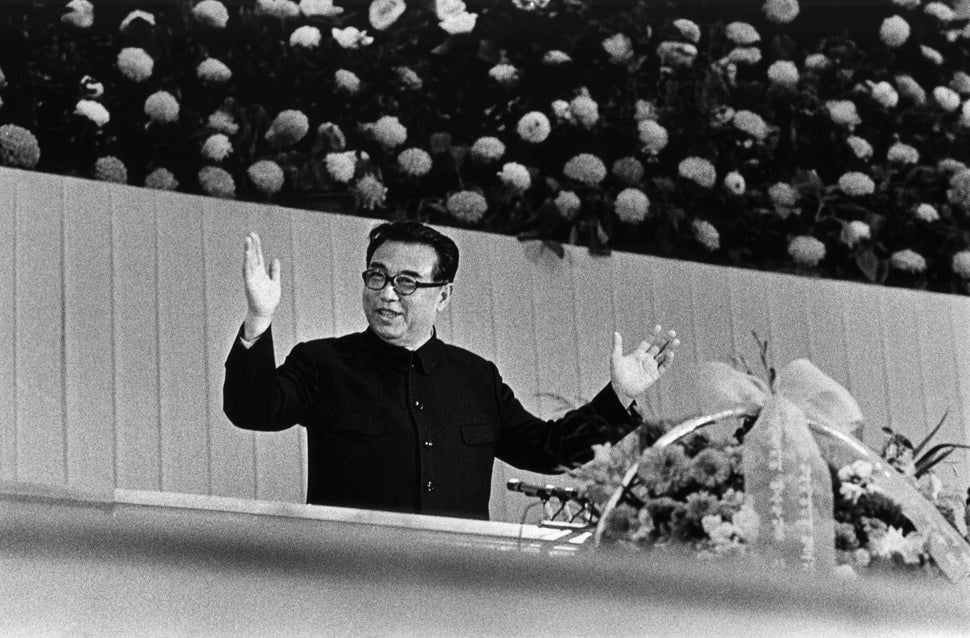 North Korean dictator Kim Il Sung at a cultural performance in an undated photo.
North Korean dictator Kim Il Sung at a cultural performance in an undated photo.During President Ronald Reagan’s term, North Korea’s leader Kim Il Sung established the foundation for the facilities and expertise required for nuclear weapons. North Korean scientists and engineers were trained in Soviet universities and research institutes in the 1960s and 70s. The Soviets built North Korea’s first research reactor, which became operational in 1967. The North then clandestinely constructed a small plutonium-producing reactor that began operation in 1986, with the capacity to produce roughly one bomb’s worth of plutonium — around 6 kilograms, or about 13 pounds ― per year. It began construction of a nuclear reprocessing facility that would allow it to extract plutonium created in the reactor’s fuel. And it trained its own nuclear experts at North Korean universities and nuclear institutes.
Reagan’s primary focus was understandably on the Soviet Union, which he termed the “evil empire” in 1983. He was aware of the North’s clandestine nuclear developments from U.S. reconnaissance satellites, and near the very end of his term, he initiated the first diplomatic talks with North Korea, counselor-to-counselor level, in Beijing.
Reagan left office with North Korea having laid the foundation for its nuclear weapons program, but he also began a dialogue with the North.
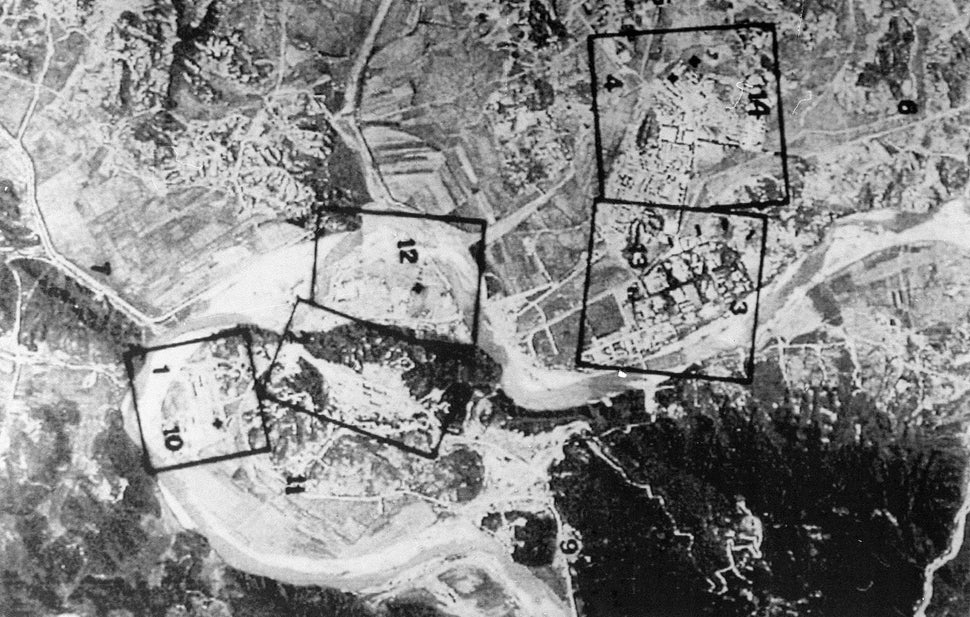 A French satellite image taken in March 1994 showing an aerial view of North Korea’s Yongbyon nuclear complex. The box marked 01-10 is identified as a nuclear fuel reprocessing site.
A French satellite image taken in March 1994 showing an aerial view of North Korea’s Yongbyon nuclear complex. The box marked 01-10 is identified as a nuclear fuel reprocessing site. President George H.W. Bush witnessed the breakup of the Soviet Union and the end of the Cold War, which not only changed the course of history but also fundamentally changed Pyongyang’s security calculus. Financial assistance from the former Soviet bloc stopped. China and Russia, key supporters of North Korea during the Cold War, pursued closer diplomatic and economic ties with South Korea. Internally, natural disasters ravaged the North’s economy. Pyongyang began to seriously explore accommodation with the West, especially the U.S.
Kim Il Sung took the first serious steps toward reconciliation with South Korea after Bush announced the withdrawal of all American nuclear weapons from the South in late 1991. The next year, the two Koreas signed the Joint Declaration on the Denuclearization of the Korean Peninsula which, among other things, agreed that neither would test, manufacture, produce, receive, possess, store, deploy or use nuclear weapons.
Kim Jong Un is a tyrant but I don’t believe he is crazy or suicidal. I believe he is deterrable.
Although Bush was aware of the North’s suspicious construction activities at its Yongbyon nuclear center, the North’s nuclear ambitions did not come to the public’s attention until some satellite imagery was leaked to the South Korean news media in 1989. In January 1992, Washington initiated high-level talks by having Under Secretary Arnold Kanter meet with Worker Party Secretary Kim Yong-sun in New York. At South Korea’s urging, Bush also called off the 1992 “Team Spirit” joint U.S.-South Korea military exercises.
Although Kim Il Sung had begun to cooperate with Washington, Pyongyang kept inspectors out of its new nuclear facilities until May 1992, by which time it had all the pieces in place for plutonium production and extraction. The fuel fabrication and reprocessing facilities were operational, and two much larger reactors were under construction.
When Bush left office, North Korea had what it needed to build nuclear weapons, but Bush also left the door open for diplomacy.
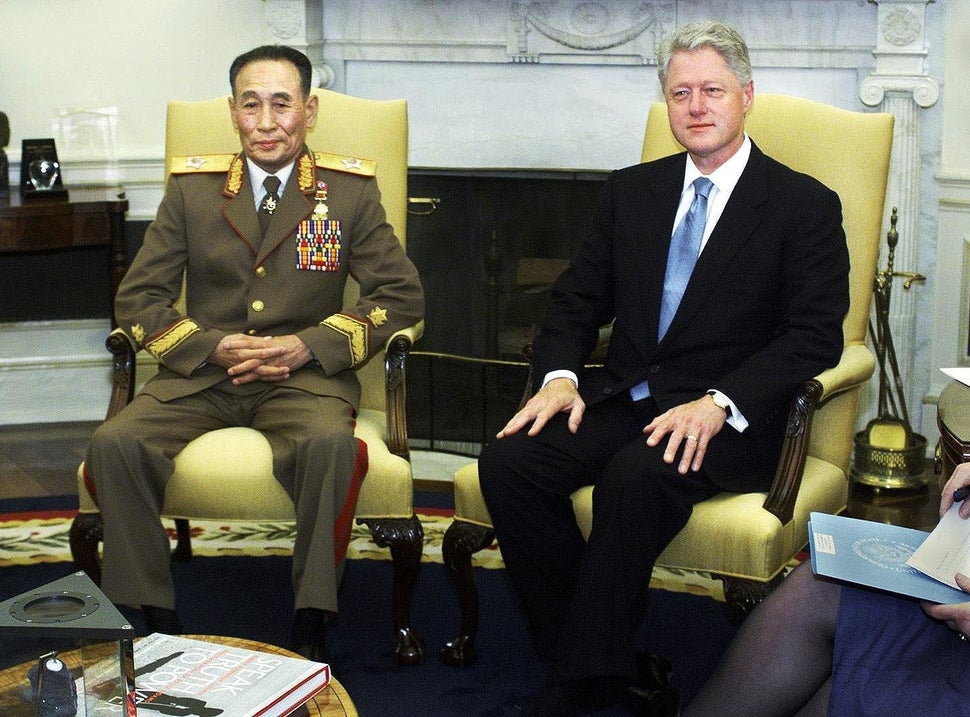 Bill Clinton with Jo Myong Rok, North Korea’s first vice chairman of the national defense commission, the most senior North Korean official to ever visit the U.S. Oct. 10, 2000.
Bill Clinton with Jo Myong Rok, North Korea’s first vice chairman of the national defense commission, the most senior North Korean official to ever visit the U.S. Oct. 10, 2000.The situation worsened early in President Bill Clinton’s term because the North announced it would withdraw from the Nuclear Nonproliferation Treaty to avoid special inspections called for by the International Atomic Energy Agency after inspectors discovered evidence of cheating during visits to the Yongbyon facilities in 1992. Pyongyang also considered the U.S. reinstating the 1993 Team Spirit exercises that year a violation of the spirit of the North-South Joint Declaration.
New negotiations began in June 1993 that temporarily averted North Korea’s withdrawal from the NPT. In 1994, however, when North Korea unloaded the reactor’s fuel containing an estimated 20 to 30 kilograms (about 44 to 66 pounds) of plutonium, Washington and Pyongyang came close to war before former President Jimmy Carter intervened and brokered a temporary freeze of the nuclear program directly with Kim Il Sung.
Intense negotiations in Geneva led to the Agreed Framework in October 1994, which changed North Korea’s nuclear technical trajectory dramatically. Pyongyang agreed to give up its indigenous nuclear reactor program for the promise of two modern electricity-producing nuclear reactors to be supplied by the U.S., South Korea and Japan. The Agreed Framework also had overarching political significance for Pyongyang in its provisions to “move toward full normalization of political and economic relations” and “to work together for peace and security on a nuclear-free Korean Peninsula.”
It is not that diplomacy with Pyongyang failed over the past 30 years but rather that Washington has not carried out diplomacy effectively.
The plutonium freeze was effectively implemented during the rest of Clinton’s term. The Yongbyon reactor and reprocessing facility were mothballed, and the two larger reactors under construction — which would have been able to produce roughly 300 kilograms (about 660 pounds) of plutonium annually— became unsalvageable. He was unable, however, to overcome strong political opposition in Washington to move toward normalization or move quickly toward the construction of the promised reactors.
Suspicions ran high on both sides. Washington accused Pyongyang of constructing a clandestine reactor inside a mountain tunnel, a claim that proved to be false. However, Kim Jong Il, who followed his father as supreme leader, was correctly suspected to have launched a covert effort to acquire centrifuge technologies to produce highly enriched uranium, an alternative to the plutonium path to the bomb.
When Pyongyang launched its first long-range missile that overflew Japan in 1998, former Secretary of Defense William J. Perry was brought in to defuse the missile crisis. His efforts led to reciprocal visits of high-level American and North Korean officials to each other’s capitals and a joint communiqué in October 2000. But time ran out on Clinton.
Clinton left office having stopped North Korea short of possessing nuclear weapons and having greatly diminished its capacity for producing plutonium. A high-level diplomatic dialogue had been initiated. A missile-testing moratorium was in place, and the covert uranium program was in its nascent stage to be dealt with later.
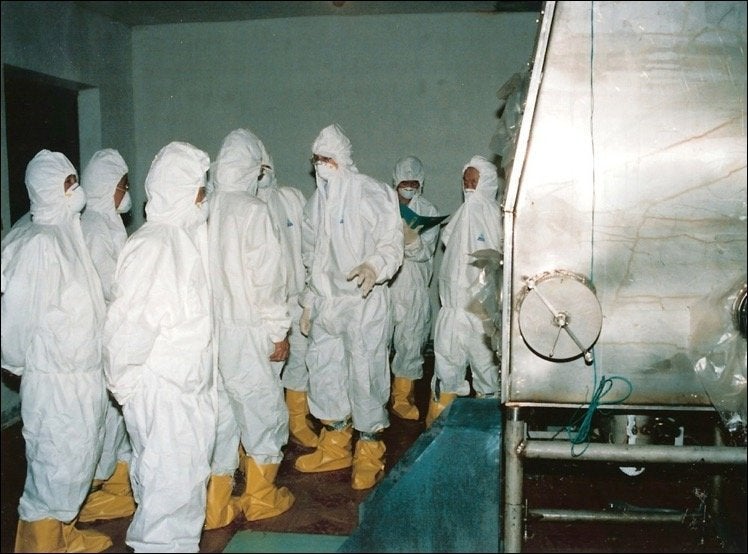 Siegfried Hecker in Yongbyon plutonium laboratory in August 2007.
Siegfried Hecker in Yongbyon plutonium laboratory in August 2007.President George W. Bush’s national security team included some of the staunchest critics of the Agreed Framework. Their intent was to drive a stake through the Agreed Framework because they viewed it as a bad deal with a cheating adversary. The administration proclaimed that North Korea would not be allowed to acquire nuclear weapons and limited the diplomatic track pursued under Clinton while undertaking a new policy review.
Although the president and his team were understandably sidetracked by having to respond to the tragedy of 9/11, they dashed all hopes of constructive diplomacy with the North by declaring it part of “an axis of evil” in the president’s 2002 State of the Union address and accusing Pyongyang of having violated the Agreed Framework by clandestinely developing the uranium enrichment path to the bomb.
By the end of 2002, the Bush administration had effectively killed the Agreed Framework, thereby opening the door for Pyongyang to withdraw from the NPT and build several nuclear bombs. Although the Bush administration’s accusation that North Korea was covertly pursuing uranium enrichment turned out to be true (as I discovered during my 2010 visit to Yongbyon), the decision to kill the Agreed Framework traded a potential threat that would have taken years to turn into bombs for one that took less than a year, dramatically changing the political landscape in Pyongyang’s favor.
Washington has not coordinated effectively with its allies or with China. It has not heeded Beijing’s advice that Washington must first address Pyongyang’s security concerns.
Pyongyang conducted its first nuclear test in 2006 after a failed multilateral diplomatic attempt to resolve the restart of the North’s nuclear program. Although that test was only partially successful, it set Kim Jong Il’s regime on a path to developing a nuclear deterrent, something it viewed as necessary for survival after the fates that befell Iraq’s Saddam Hussein and Libya’s Muammar Gaddafi, who pursued the bomb but never reached that goal and were later ousted with the help of U.S. forces.
Diplomatic attempts by the Bush administration late in the president’s second term turned out to be too little too late. They managed to temporarily halt the North’s plutonium program but did not end its nuclear weapons program. President George W. Bush left office with North Korea likely having five or six primitive nuclear bombs and a determination to build a strong nuclear deterrent.
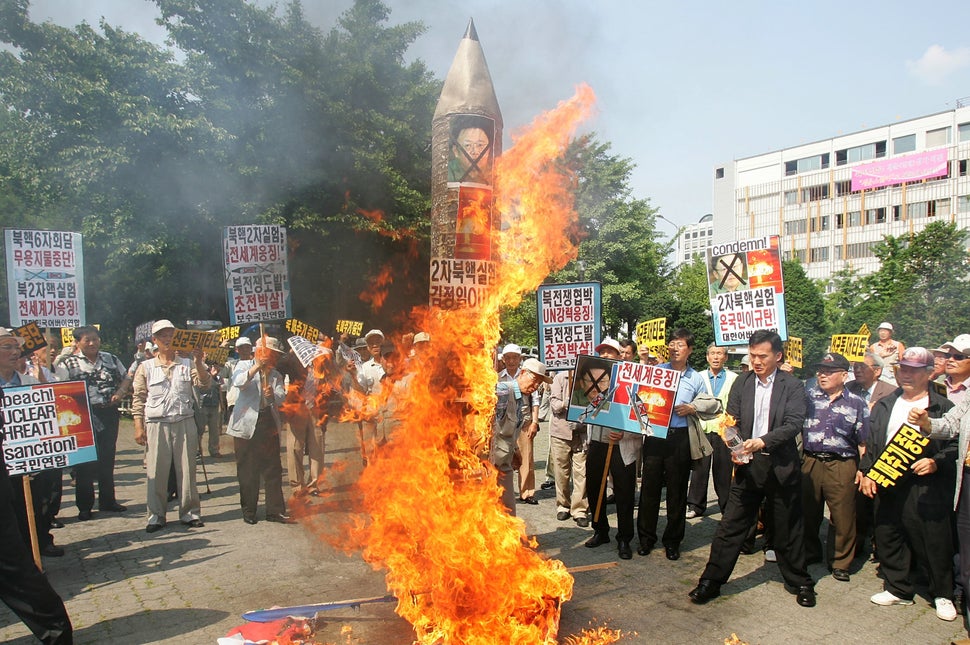 Protestors burn portraits of Kim Jong Il and a mock-up of a North Korean missile after Pyongyang announced it had successfully conducted a second nuclear test. Seoul, April 8, 2009.
Protestors burn portraits of Kim Jong Il and a mock-up of a North Korean missile after Pyongyang announced it had successfully conducted a second nuclear test. Seoul, April 8, 2009.Just after President Barack Obama entered office, in April 2009, Pyongyang tested a long-range missile. The United Nations Security Council levied sanctions on Pyongyang, which, in turn, led Kim Jong Il to terminate diplomacy and expel the international inspectors that had regained access to the nuclear facilities in 2007. He followed that with a second nuclear test in May — this one successful.
The Obama administration now faced the North’s steady march to an expanding nuclear arsenal. Obama didn’t want to engage directly with Kim Jong Il; instead, his administration pressured the North to denuclearize before talks could start. Obama also pushed for tighter U.N. and U.S. sanctions and put pressure on Beijing to implement them.
On my seventh and final visit to Yongyon in November 2010, it became clear that Pyongyang had significantly raised the stakes with a game-changing modern uranium centrifuge facility. Pyongyang was moving full speed ahead toward a nuclear arsenal, and the U.S. would be unable to reliably estimate the size of its stockpile of fissile material. Unlike the plutonium route to the bomb, which was limited to creating no more than one bomb’s worth of plutonium in a reactor annually and was highly observable, the uranium route was potentially unbounded and impossible to observe from afar. I don’t believe that any outsiders have visited Yongbyon since I left.
It’s time to send an envoy to Pyongyang to stress that nuclear war will be disastrous and must be avoided.
Following that visit, I advised the administration that denuclearization should be the long-term objective, but in the short term, it was essential to stop Pyongyang from making things worse by building a threatening nuclear arsenal — that is, one with more bombs and better bombs. In other words, the focus should be on stopping nuclear and missile testing, which would allow the North to mount small, powerful warheads on missiles.
But serious diplomacy never gained traction in the Obama administration. It appears that the president did not sense signals from Pyongyang indicating serious interest in diplomacy. When Pyongyang did appear willing to negotiate, his administration considered the North’s price too high.
In the meantime, the situation got much worse. Surveillance images and North Korean propaganda — combined with three successful nuclear tests, each with the destructive power of the bombs dropped in Hiroshima and Nagasaki — show that Pyongyang has built a menacing and growing nuclear arsenal. The North also launched some two dozen missiles in 2016, some of which may already be able to carry nuclear warheads.
My best guess is that Obama left office with North Korea potentially having sufficient plutonium and highly enriched uranium to build an arsenal of 20 to 25 nuclear weapons, plus a rapidly developing missile program that likely could deliver these anywhere in South Korea and Japan. In his first meeting with then-President-elect Trump, he told him that North Korea poses America’s greatest security challenge.
 Trump speaks with reporters about North Korea at his golf estate in Bedminster, New Jersey. Aug. 11.
Trump speaks with reporters about North Korea at his golf estate in Bedminster, New Jersey. Aug. 11.It is difficult to predict how Trump will handle North Korea’s nuclear challenge based on his first six months in office. He responded to Kim Jong Un’s New Year message that Pyongyang will develop an intercontinental ballistic missile with an “it won’t happen!” tweet, implying that doing so represents a red line. However, he also indicated he would consider meeting with Kim under the right circumstances. Pyongyang’s relentless drive to enhance its missile delivery systems in 2017 has apparently moved Pyongyang close to, if not past, his red line.
Two of the North’s missile launches in July appear to be ICBM-capable, which triggered Trump’s “fire and fury” warning to Kim. Fortunately, this week’s developments in Washington and Pyongyang brought a temporary reprieve. To take advantage of that opening, the Trump administration must get beyond its preoccupation with the ICBM threat and focus on what I consider to be the greatest threat posed by the North’s nuclear program — that Washington stumbles into an inadvertent war on the Korean Peninsula, potentially leading to hundreds of thousands of deaths, including many American citizens.
It is not that diplomacy with Pyongyang failed over the past 30 years but rather that Washington has not carried out diplomacy effectively. It has vacillated between negotiations and threats. A close look at the record shows that although Pyongyang has never given up its drive for a nuclear deterrent, nuclear progress slowed significantly during times of diplomacy and accelerated during times of isolation, sanctions and threats. Ironically, Washington has failed to deal effectively with Pyongyang’s transgressions when it violated accords and when it egregiously exported nuclear technologies in the past.
Washington should convey face-to-face that it does not seek regime change and that it is deterred from attacking the North but not from defending the U.S. and its allies.
Washington has also not coordinated effectively with its allies or with China. Whereas it has relentlessly chastised China for not doing enough to rein in Pyongyang, it has expected China to work against its own strategic interests. It has not heeded Beijing’s advice that Washington must first address Pyongyang’s security concerns.
Trump now faces a different and greater challenge than his predecessors. He must avert nuclear war on the Korean Peninsula. But ratcheting up the threats to prevent North Korea from achieving an ICBM capability exacerbates the risk of stumbling into an inadvertent war. Instead of fanning the winds of war with threatening rhetoric, it’s time to send an envoy to Pyongyang to stress that nuclear war will be disastrous and must be avoided.
Such talks should explore mechanisms to avoid misinterpretation of actions that could lead to conflict and potential escalation to the nuclear level. In the simplest terms, Washington should convey face-to-face that it does not seek regime change and that it is deterred from attacking the North but not from defending the U.S. and its allies. It should reiterate that any attack on South Korea or Japan, be it with conventional, chemical or nuclear weapons, would bring a devastating retaliatory response upon North Korea.
Although such talks are not negotiations, a serious face-to-face exchange of views may lay the foundation for a return to diplomatic dialogue on denuclearization and normalization. Exchange is essential — Washington must listen as well as talk.
This was produced by The WorldPost, which is published by the Berggruen Institute.

